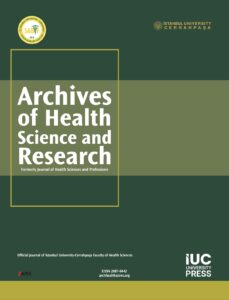Publications

Casting Light on Mechanical Properties of Lower and Upper Extremity Muscles in Children with Spinal Muscular Atrophy and Healthy Peers
Authors: Seval Kutluturk-Yikilmaz 1, Tulay Cevik-Saldiran 2 , Ozgul Ozturk 3 , Sedat Oktem 4
Affiliations:
- Department of Physiotherapy and Rehabilitation, University of Health Sciences, Faculty of Hamidiye Health Sciences, Istanbul, Turkiye
- Department of Physiotherapy and Rehabilitation, Bitlis Eren University, Faculty of Health Sceinces, Bitlis, Turkiye
- Department of Physiotherapy and Rehabilitation, Acibadem Mehmet Ali Aydinlar University, Faculty of Health Sciences, Istanbul, Turkiye
- Department of Pediatric Pulmonary Diseases, Istanbul Medipol University, Faculty of Medicine, Istanbul, Turkiye
Journal: Archives of Health Science and Research - June 2024, Volume 11, Issue 2, Pages 91-96
-
Field & Applications:
- Medical
- Pediatrics
- Neurology
- Neurodegenerative disorder
- Reliability
- Validity
Objective: This study aimed to compare the mechanical properties of upper and lower extremities between children with spinal muscular atrophy types 1 and 2 and healthy peers.
Methods: The study included children with spinal muscular atrophy types 1 and 2 (n=21) and healthy controls (n=25) aged between 1 and 4 years. Mechanical properties of the biceps brachii, triceps brachii, rectus femoris, and gastrocnemius muscles were assessed using a digital myotonometer.
Results: Muscle stiffness values of the right (d = 1.42) and left (d=1.15) biceps brachii, right (d = 1.14) and left (d=0.97) triceps brachii, and left rectus femoris (d = 0.85) were significantly higher in children with spinal muscular atrophy. Elasticity values of the right (d = 1.42) and left (d = 1.53) biceps brachii, right (d = 1.54) and left (d = 1.19) triceps brachii, left rectus femoris (d = 0.93), and right gastrocnemius (d = 0.92) were also significantly higher in children with SMA. No significant differences were observed between the groups in any of the evaluated resting muscle tone measurements (P > .05), except for the right biceps brachii muscle (d = 0.97).
Conclusion: Our study revealed that mechanical properties of the upper and lower extremity muscles in children with spinal muscular atrophy types 1 and 2 differ compared to their healthy peers. Clinicians and researchers may be able to better understand the underlying causes of spinal muscular atrophy and develop more effective treatments by having a better understanding of changes in muscle stiffness and flexibility.
Keywords: elasticity, muscle tone, myotonometer, spinal muscular atrophy, stiffness
Our study provides evidence about the mechanical properties of upper and lower extremity muscles in children diagnosed with SMA types I and II by displaying notable differences compared to their healthy peers. Specifically, we observed significantly higher skeletal muscle stiffness and lower elasticity in children with SMA. These findings highlight the impact of SMA on muscle biomechanics and suggest potential implications for motor function and mobility in affected individuals. Future studies could adopt a longitudinal design to understand better the relationship between muscle function and disease progression in children with SMA. Besides that, further research is warranted to elucidate the underlying mechanisms contributing to these alterations in muscle mechanical properties and explore their relationship with disease progression and therapeutic interventions. Understanding the specific changes in muscle biomechanics associated with SMA can aid in the development of targeted interventions to improve motor function and quality of life for affected children.


